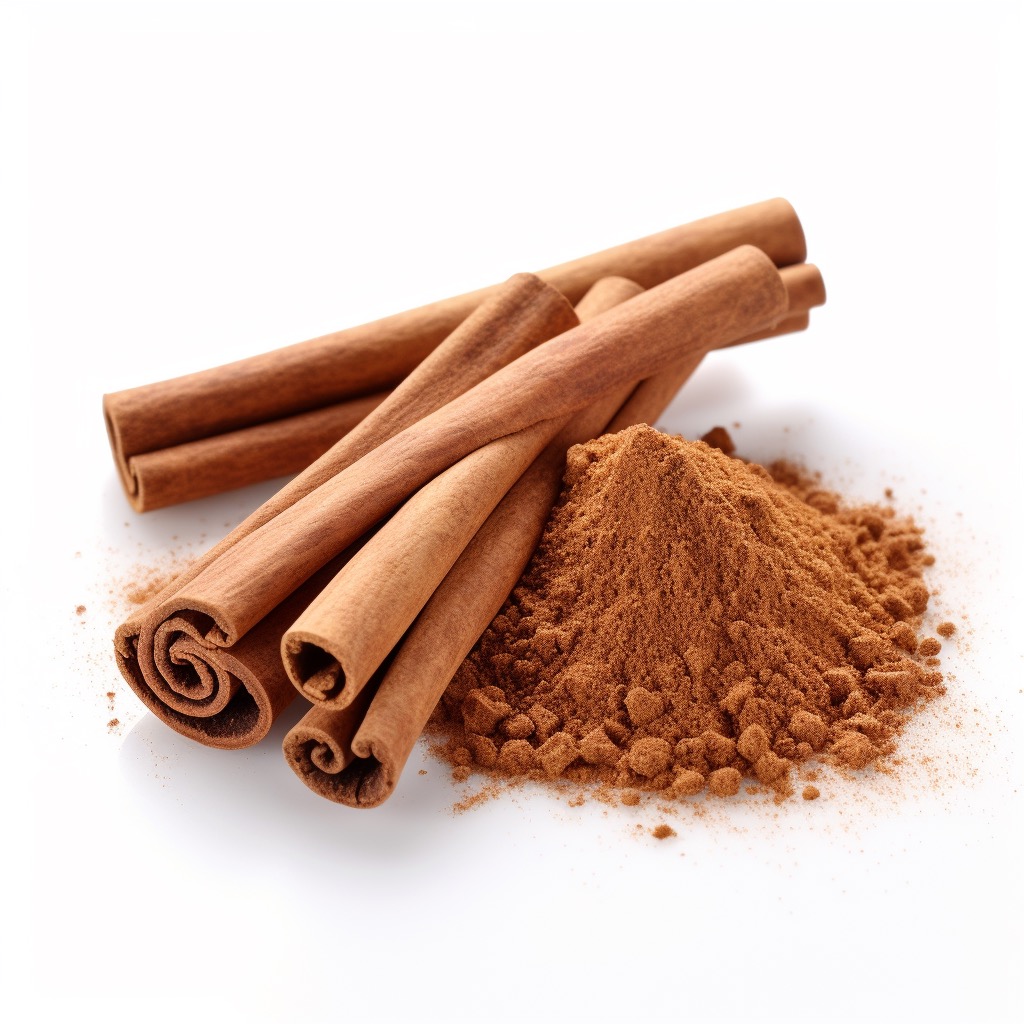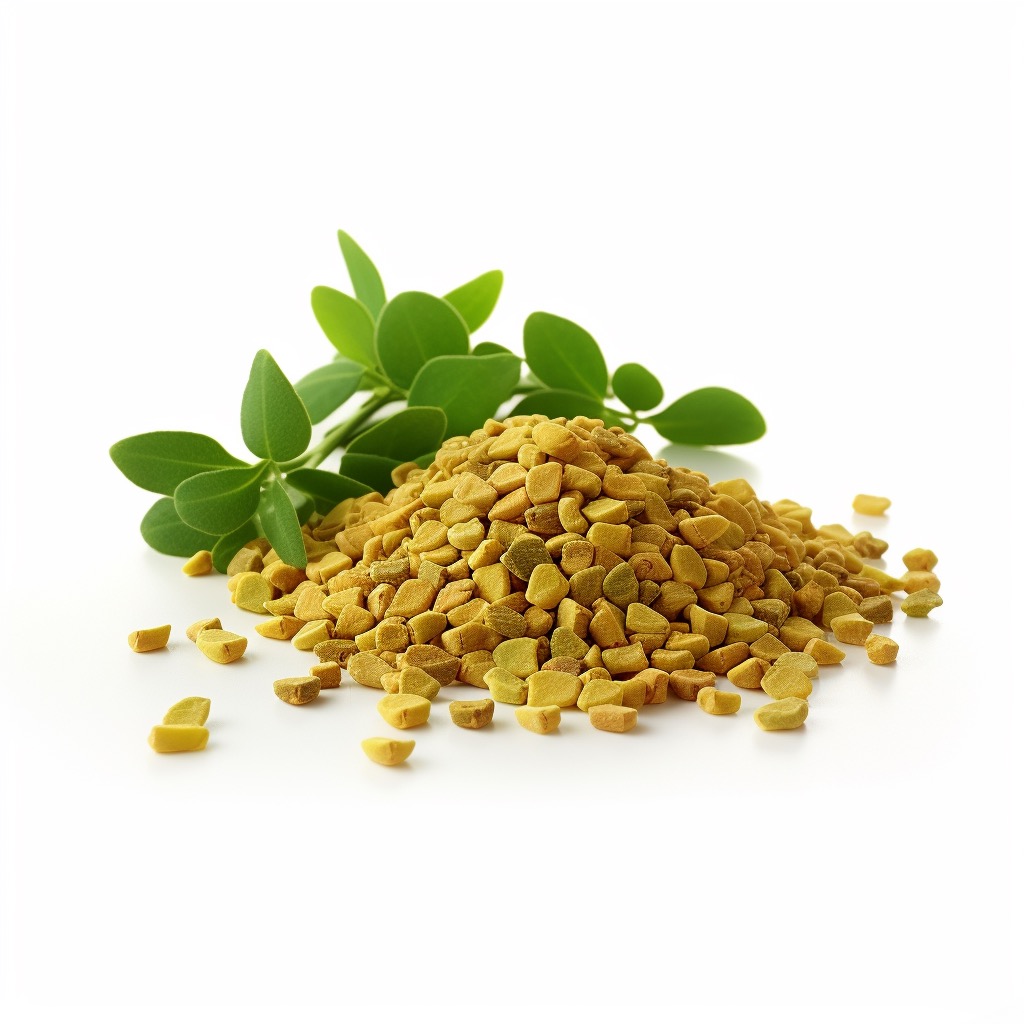Adiponectin is a hormone that often doesn’t get the attention it deserves when we talk about metabolic health. Produced by our adipose tissue, this protein hormone plays a crucial role in a host of metabolic processes including glucose regulation and fat metabolism. Its importance extends to weight management and overall wellness. As someone who battled weight issues in my late 30s, I can’t emphasize enough how understanding hormones like adiponectin can be a game-changer.
Herbs offer an accessible and natural way to boost adiponectin levels. In this article, we’ll delve into the science of adiponectin, explore the herbs that can enhance its levels, and provide a biohacker’s approach to maximizing metabolic health.
What it Adiponectin and Where it Comes From
Adiponectin is a protein hormone that is secreted by adipose tissue, also known as fat cells. Despite being produced by fat cells, this hormone actually helps us manage weight by regulating insulin sensitivity and promoting the breakdown of fatty acids.
Why It’s Important
Low levels of adiponectin have been associated with a range of metabolic conditions including obesity, type 2 diabetes, and cardiovascular diseases. Insulin resistance is a common thread linking these conditions, and adiponectin helps improve the body’s response to insulin.
The Science Behind Adiponectin
Be free to skip this section if you’re not interested!
Interaction with Receptors
Adiponectin achieves its effects through interaction with two main receptors: AdipoR1 and AdipoR2. These receptors are found in various tissues including the liver, skeletal muscles, and adipose tissue itself.
Role in Cellular Signaling
Adiponectin plays a role in activating AMP-activated protein kinase (AMPK) and peroxisome proliferator-activated receptors (PPARs), both of which are critical for metabolic processes. AMPK serves as a sort of energy sensor, regulating energy expenditure, while PPARs regulate lipid metabolism.
Here’s how I translate this in super-simple language. Obviously, take this with a grain of salt—this is to the best of my understanding of simplifying this: Imagine your body is like a big city, and adiponectin is like a superhero who helps keep the city running smoothly. This superhero needs to talk to the control centers in different parts of the city to make sure everything is okay. These control centers are called AdipoR1 and AdipoR2. They are like special walkie-talkies in places like the liver and muscles.
When the superhero adiponectin talks to these walkie-talkies, it helps turn on some very important switches. One switch, called AMPK, is like the city’s power meter. It helps decide how much energy the city should use. The other switch, called PPARs, is like a traffic cop for fats, telling them where to go and what to do.
So, our superhero adiponectin talks to these special walkie-talkies and helps turn on these switches to make sure the city (your body) runs really well!
Scientific Evidence
Numerous studies have shown the benefits of having high levels of adiponectin, such as improved insulin sensitivity, reduced inflammation, and lower risk of cardiovascular diseases. Given these advantages, boosting adiponectin levels is an area of keen interest for anyone looking to improve their metabolic health.
Stay tuned for the next sections where we will discuss specific herbs that can help boost adiponectin levels, tips on how to incorporate them into your diet, and advanced biohacking strategies for the keen enthusiasts among us.
By understanding and naturally manipulating our adiponectin levels, we can take a proactive approach to improve our metabolic health. Let’s delve into the herbs that can help us achieve that.
Herbs That Boost Adiponectin
The world of herbs offers a treasure trove of natural remedies and health enhancers. There are specific herbs that have been studied for their ability to boost adiponectin levels, thereby contributing to metabolic health. Here are some of the most effective ones:
Turmeric (Curcumin)

Suggested uses:
- In Cooking: Turmeric is a staple in many cuisines and can be easily added to curries, stews, and even smoothies.
- Supplements: Curcumin supplements are widely available. Opt for those that include black pepper (piperine) for enhanced absorption.
- Tea: Turmeric tea is another delicious way to consume this herb.
Active Ingredient
The active ingredient in turmeric is curcumin, which is a powerful anti-inflammatory and antioxidant compound.1
Effect on Adiponectin Levels
Curcumin has been shown to increase adiponectin levels, thereby enhancing insulin sensitivity and promoting healthier metabolism.
Scientific Studies
Research has shown that curcumin can effectively elevate adiponectin levels and lower inflammation markers. This makes it a valuable supplement for anyone looking to improve metabolic health.2

Cinnamon
Suggested uses:
- In Cooking: Add cinnamon to oatmeal, coffee, or even savory dishes for extra flavor and health benefits.
- Tea: Cinnamon tea is both comforting and beneficial.
- Supplements: Cinnamon capsules can be a convenient way to get a controlled dose.
Active Ingredient
Cinnamaldehyde is the compound that gives cinnamon its distinct flavor and aroma. But beyond that, it has significant health benefits.
Effect on Adiponectin Levels
Cinnamaldehyde has been shown to increase adiponectin levels3. It also has the added benefit of improving insulin sensitivity, which is essential for glucose regulation.
Scientific Studies
Various studies have supported the efficacy of cinnamaldehyde in boosting adiponectin levels, making cinnamon a potent addition to a metabolic health regimen.

Green Tea (EGCG)
Suggested uses:
- Tea: The most straightforward way to consume EGCG is by drinking green tea. Just drink it. Get a good quality green tea and you’ll start loving it, seriously. Most people I’ve met who don’t like green tea have never had well-prepared quality green tea.
- Supplements: Green tea extract capsules are also available for a more concentrated dose.
- Cooking: Matcha, a powdered form of green tea, can be used in various recipes, including smoothies and baked goods.
Active Ingredient
Epigallocatechin gallate (EGCG) is the active compound in green tea, renowned for its antioxidant properties.
Effect on Adiponectin Levels
EGCG has been found to positively regulate adiponectin levels, aiding in better fat metabolism and insulin sensitivity.
Scientific Studies
Research supports the role of EGCG in adiponectin regulation, making green tea not just a soothing beverage but a metabolic booster as well.4

Ginger
Suggested uses:
- Tea: Ginger tea is a warming and soothing option that not only delivers the benefits of gingerol but also serves as a comforting beverage. My favorite way is to just slice or grate fresh ginger and put it in hot water, rather than using the dried powdered ginger.
- In Cooking: Fresh ginger can be added to a variety of dishes, from stir-fries to soups, to imbue them with its distinctive flavor and health benefits.
- Supplements: Ginger capsules are also available for those who don’t like the taste of ginger but still want to benefit from it’s powerful properties.
Active Ingredient
The active compound in ginger that gets a lot of attention is gingerol. It’s known for its anti-inflammatory and antioxidant properties.
Effect on Adiponectin Levels
Gingerol has been shown to have a positive impact on adiponectin levels. By boosting these levels, ginger can contribute to improved insulin sensitivity and better fat metabolism.
Scientific Studies
Various studies have pointed to the beneficial role of ginger in metabolic health. For instance, research has shown that ginger supplementation can significantly elevate adiponectin levels, thereby aiding in better metabolic functioning.5
Additional Benefits
Beyond its effect on adiponectin, ginger also offers other health benefits like aiding digestion, reducing nausea, and even providing relief from muscle pain.

Fenugreek
Suggested uses:
- In Cooking: Fenugreek seeds or leaves can be added to various dishes, particularly Indian and Middle Eastern recipes.
- Tea: Fenugreek tea is another option.
- Supplements: Fenugreek capsules are available for those who prefer a more convenient form.
Active Ingredient
Fenugreek contains various phytochemicals that contribute to its health benefits.
Effect on Adiponectin Levels
These phytochemicals have been linked to increased adiponectin production, making fenugreek an excellent choice for improving metabolic parameters.6
Additional Benefits
Apart from its effect on adiponectin, fenugreek has also been shown to help with glucose control and reducing cholesterol levels.

Berberine
Suggested uses:
- Supplements: Berberine is most commonly taken as a supplement, usually available in capsule form.
- Consult Your Doctor: Due to its potency, it’s advisable to consult a healthcare professional before starting a berberine supplement, especially if you’re on other medications.
Active Ingredient
Berberine is commonly found in herbs like European barberry, goldenseal and has been used traditionally in various forms of medicine.
Effect on Adiponectin Levels
Berberine can increase adiponectin levels, thereby improving insulin sensitivity and lipid metabolism.
Scientific Studies
Studies have shown that berberine is effective in boosting adiponectin levels, further strengthening its role as a metabolic enhancer.7
These herbs offer a natural and effective way to boost your adiponectin levels. But, as always, the key is to integrate them into a balanced lifestyle for optimal results.
Precautions and Possible Interactions
While herbs offer a natural way to boost adiponectin levels, it’s essential to exercise caution, particularly if you’re on other medications or have pre-existing conditions:
- Consult a Healthcare Professional: Always consult your healthcare provider before starting any new supplement regimen.
- Interactions: Some herbs may interact with medications, including but not limited to anticoagulants and antidiabetic drugs.
- Pregnancy and Lactation: If you’re pregnant or nursing, consult a healthcare provider before using these herbs.
Incorporating these herbs into your diet can be a simple yet effective way to improve your metabolic health.
The Biohacker’s Approach
As someone who’s been through the journey from overweight to fit and healthy, I can tell you that biohacking offers an advanced toolkit for understanding your body and optimizing its functions. When it comes to boosting adiponectin levels, go beyond merely incorporating herbs into your diet. Here’s how you can fine-tune your strategy:
Tracking Adiponectin Levels
- Blood Tests: The most direct way to know your adiponectin levels is through a blood test. Regular testing allows you to track changes over time and adjust your interventions accordingly.
- Data Analytics: Use platforms that allow you to analyze your blood test data in conjunction with other health metrics. This holistic view can offer unique insights into your metabolic health.
Personalizing Herb Dosages
- N=1 Experiments: Conduct self-experiments to determine which herbs and dosages work best for you. Start with one herb at a time to isolate its effects, and track your adiponectin levels before and after.
- Optimization Algorithms: Some biohackers use algorithms or machine learning tools to analyze how different variables like diet, sleep, and herbs affect their adiponectin levels. But that’s seriously going down the deep end.
Synergizing with Lifestyle Changes
- Intermittent Fasting: Fasting has been shown to improve adiponectin levels. Combine this with your herbal regimen for a synergistic effect.
- Exercise: Regular physical activity is another proven method to increase adiponectin. Consider incorporating high-intensity interval training (HIIT) or resistance training into your routine.
- Sleep Optimization: Poor sleep can negatively impact adiponectin levels. Use sleep tracking devices to monitor your sleep quality and make necessary adjustments.
Advanced Tools and Gadgets
- Wearable Devices: Wearables like fitness trackers can provide real-time data on various health metrics, giving you immediate feedback on the effectiveness of your interventions.
- Smart Supplements: Some companies are developing time-release capsules for the herbal compounds that can deliver optimal dosages throughout the day, ensuring a more consistent effect on adiponectin levels.
It’s about taking a proactive role in understanding your body’s unique needs and responses, something I found invaluable in my own transformation.
Conclusion
Adiponectin is a key hormone for metabolic health, weight management, and overall wellness. Its role in regulating glucose and lipid metabolism makes it a key player in combating conditions like obesity, type 2 diabetes, and cardiovascular diseases. As we’ve explored in this article, various herbs like turmeric, cinnamon, ginger, green tea, fenugreek, and berberine offer natural avenues to boost this beneficial hormone.
Start with one herb or one lifestyle change and observe how your body responds. Make adjustments, track your progress, and don’t hesitate to seek expert advice.
References
- Menon VP, Sudheer AR. Antioxidant and anti-inflammatory properties of curcumin. Adv Exp Med Biol. 2007;595:105-25. doi: 10.1007/978-0-387-46401-5_3. PMID: 17569207. ↩︎
- Clark CCT, Ghaedi E, Arab A, Pourmasoumi M, Hadi A. The effect of curcumin supplementation on circulating adiponectin: A systematic review and meta-analysis of randomized controlled trials. Diabetes Metab Syndr. 2019 Sep-Oct;13(5):2819-2825. doi: 10.1016/j.dsx.2019.07.045. Epub 2019 Jul 30. PMID: 31425942. ↩︎
- Hosni, Ahmed A., et al. “Cinnamaldehyde potentially attenuates gestational hyperglycemia in rats through modulation of PPARγ, proinflammatory cytokines and oxidative stress.” Biomedicine & Pharmacotherapy 88 (2017): 52-60. https://doi.org/10.1016/j.biopha.2017.01.054 ↩︎
- Shimada, Masaya, et al. “Dietary supplementation with epigallocatechin gallate elevates levels of circulating adiponectin in non-obese type-2 diabetic Goto-Kakizaki rats.” Bioscience, biotechnology, and biochemistry 71.8 (2007): 2079-2082. https://doi.org/10.1271/bbb.70174 ↩︎
- Isa, Yasuka, et al. “6-Shogaol and 6-gingerol, the pungent of ginger, inhibit TNF-α mediated downregulation of adiponectin expression via different mechanisms in 3T3-L1 adipocytes.” Biochemical and biophysical research communications 373.3 (2008): 429-434. https://doi.org/10.1016/j.bbrc.2008.06.046 ↩︎
- Uemura, Taku, et al. “Diosgenin present in fenugreek improves glucose metabolism by promoting adipocyte differentiation and inhibiting inflammation in adipose tissues.” Molecular nutrition & food research 54.11 (2010): 1596-1608. https://doi.org/10.1002/mnfr.200900609 ↩︎
- Yang, Jing, et al. “Berberine improves insulin sensitivity by inhibiting fat store and adjusting adipokines profile in human preadipocytes and metabolic syndrome patients.” Evidence-Based Complementary and Alternative Medicine 2012 (2012). https://doi.org/10.1155/2012/363845 ↩︎
Disclaimer
This article is for informational purposes only and is not intended as medical advice. Always consult healthcare professionals before starting any new supplement regimen, especially if you have pre-existing conditions or are taking medications.

